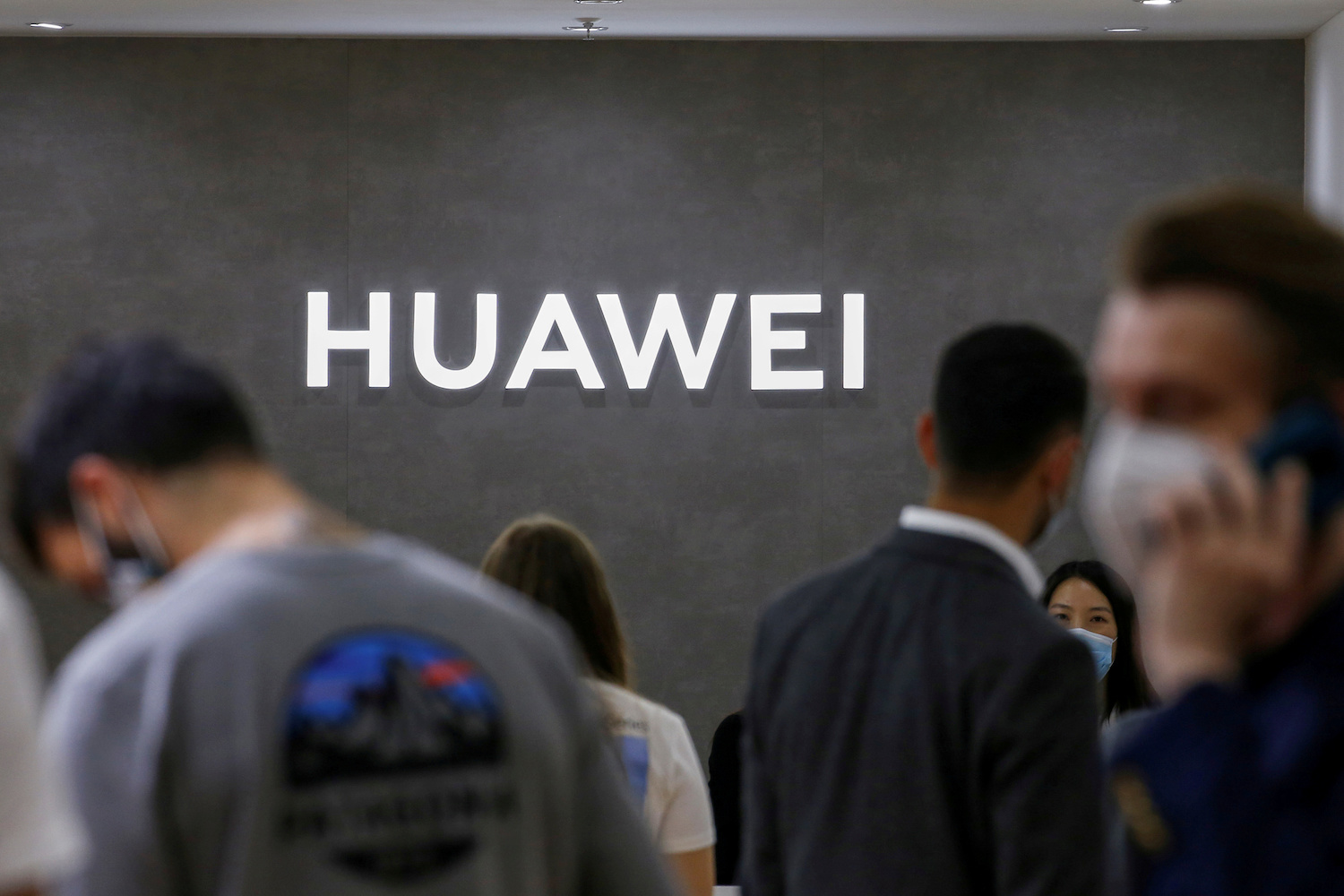(ATF) The chip inventory that Huawei stockpiled before US sanctions hit full force and reserved for its new Mate X2 smartphone is likely not enough to cover consumer demand, judging by the phone’s pre-sale booking volume.
Huawei launched the Mate X2 on Monday, which highlights the Chinese tech firm’s continued push into the high-end smartphone space, despite huge blows to the business from US sanctions.
The 5-nanometer (nm) Kirin 9000 processor used by the Mate X2 is from an inventory that Huawei stocked up on before the US chip ban went into effect, people familiar with the matter told Asia Times Financial.
But with more than 2 million people booking to purchase the Mate X2 as of Monday, chips reserved for the phone are likely to run out, or there could be a delay in supply.
“They won’t use up all the chips on this phone. Huawei will continue to roll out new phones as a statement that they’re still in the market. Huawei has a few more 5G premium models in the pipeline which will also need the chips. In 4G, Huawei faces less of a restriction and quite a few suppliers can provide 4G chips to Huawei,” an industry source revealed.
The Chinese tech giant is reportedly planning to launch the P50, a more advanced premium 5G smartphone after the P40, in April.
When Huawei sold its budget Honor smartphone brand last November to save Honor from US sanction impacts, analysts estimated that Huawei’s high-end chip inventories would sustain its smartphone business for about two years. The move enabled Honor to purchase 5G chips from Qualcomm after its alleged split with Huawei.
The Mate X2, which starts selling in China from tomorrow (Feb 25), has a 6.45-inch exterior display as well as an interior display that is 8-inches when unfolded. The 256GB version will be priced at 17,999 yuan ($2,785) while the 512GB model will start at 18,999 yuan.
Given its high price, there could be a question on whether the pre-sale bookings will all be converted into actual sales, analysts have said. So, there could be less pressure on the supply side.
A key bottleneck faced by Huawei’s smartphone business is chip shortage.
The Trump administration put Huawei on the Commerce Department’s Entity List in May 2019, which banned it from buying key software and components from American companies on national security grounds. And last year, Washington moved to cut Huawei’s access to chip supplies further.
Huawei designs its own range of chips called Kirin which are manufactured mainly by Taiwan Semiconductor Manufacturing Co (TSMC). In May 2020, the US introduced a rule which requires foreign manufacturers using American chipmaking technologies, such as TSMC, to get a licence before they can sell chips to Huawei.
The restrictions, which took effect in mid-September, cut off Huawei’s access to high-end semiconductor chip supplies and caused the Chinese telecom giant’s global smartphone sales to plunge.
Huawei’s shipments (including Honor) fell outside the top 5 smartphone vendors for the first time and saw it drop to sixth spot in the fourth quarter, Canalys research showed. Its Q4 shipments were down nearly 43% from a year earlier, dropping to 32 million units.
Huawei ‘component orders to plunge this year’
Meanwhile, a report by Nikkei Asia last week said Huawei has notified suppliers that its smartphone component orders will fall by more than 60% this year as US sanctions continue to bite. Huawei is reported to have shipped 189 million smartphones in 2020, although that was a sizable decrease from the 240 million units shipped in 2019.
Given the vulnerability exposed by what happened to Huawei, China – which spends more on semiconductor imports than it does on oil – has ramped up moves to create a self-sustaining supply of semiconductors at home.
Huawei is among 90 Chinese tech companies and institutes that have formed a new standards group in a bid to strengthen the country’s supply of computer chips. China’s State Council announced a goal last year to increase the country’s chip self-sufficiency rate to 70% – up from 30% – within five years.
Another big blow to Huawei was being cut off from Google’s Android operating system and Google Mobile Service (GMS) support.
In response, Huawei launched its own HarmonyOS, an “all-in-one” operating system that it had been developing for several years. HarmonyOS supports not only smartphones, but also various other devices such as “smart” TVs, watches, laptops, and head units.
The company launched a second version of HarmonyOS last year and said it would come to phones in 2021.
On Monday, Huawei said that users could begin upgrading their phones to HarmonyOS from April, with the Mate X2 one of the first phones able to do this. Huawei has been courting developers to build apps for its operating system.
ALSO SEE:
- Huawei ramps up chip investment as smartphone shipments tumble
- Honor in 5G tie-up with Qualcomm after cutting ties with Huawei
- As stocks deplete, Huawei plans its own in-house chips
- Huawei says consumer chip supply is challenging
- New Huawei chairman bends the knee to Qualcomm
- As US ban on Huawei starts, China tech giant claims 31% of market
- Huawei inks deal in Shanghai to create its own microchips























